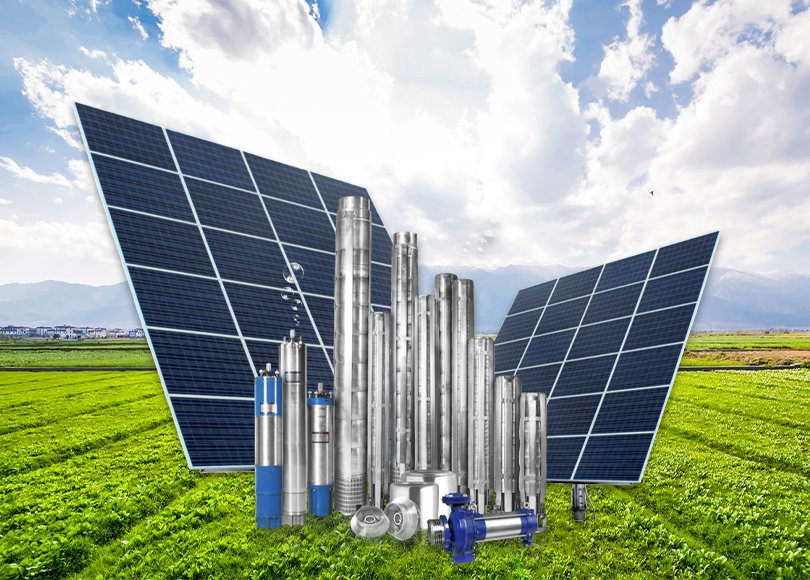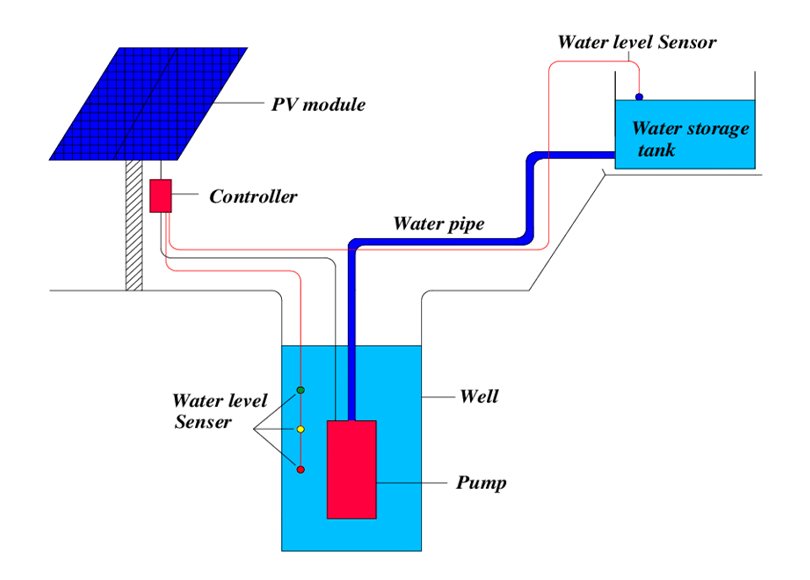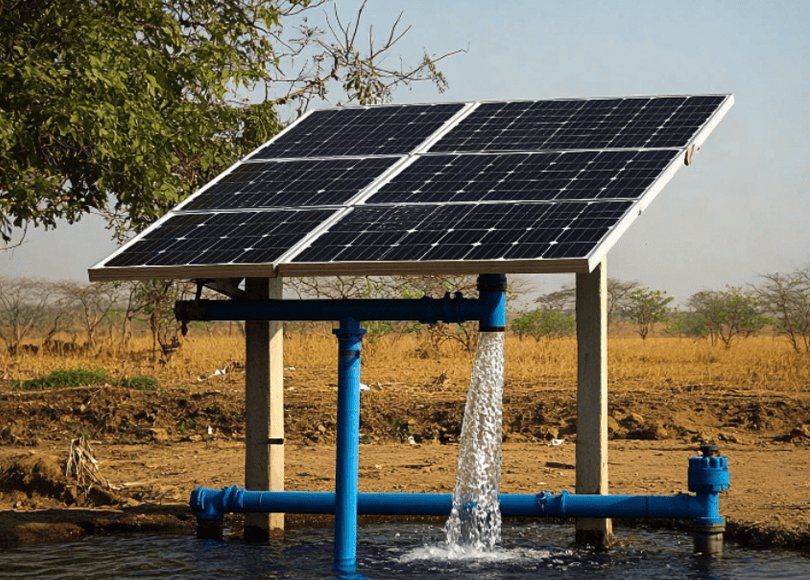
A solar pump (or solar water pump) is a water pumping system powered by electricity generated from solar energy, typically via photovoltaic (PV) panels. Instead of relying on grid electricity or diesel fuel, these pumps harness sunlight to operate, making them especially valuable in remote or rural areas where conventional power supply is unreliable or unavailable
With solar pumps, a farmer can cultivate 3 crops a year, which earlier was not possible because of lack of power availability or costlier operation through diesel. Solar pumps enable crop irrigation during daytime because they make food from sunlight, CO2 and water. Water given at night anyway gets wasted. Other benefits are:.


With solar pumps, a farmer can cultivate 3 crops a year, which earlier was not possible because of lack of power availability or costlier operation through diesel. Solar pumps enable crop irrigation during daytime because they make food from sunlight, CO2 and water. Water given at night anyway gets wasted. Other benefits are:.

Solar pumps operate using three main components. Solar cells collect the sun's rays and convert them into usable electricity. These cells are typically covered in silicon or another semiconductor material that generates direct-current electricity. Wiring transports the electricity from the cells to the pump, which then moves the water. As the sun rises, the intensity of sunlight gradually increases, initiating the pump operation approximately 1-2 hours after sunrise. The current and pump flow rise from morning to noon and decline from noon to evening.


Solar water pumps use energy from solar panels to operate a water pump, providing water for irrigation, livestock, or domestic use without relying on grid electricity or diesel generators.
Solar panels convert sunlight into electricity, which powers the pump to draw water from a source such as a well, river, or pond.
Surface-mounted pumps: Used for shallow water sources (less than 10 meters deep).
Submersible pumps: Used for deep borewells (water table deeper than 10-15 meters).
Floating pumps: Used in ponds or reservoirs.
Solar pumps have lower operating costs, require minimal maintenance, have a longer lifespan, and are environmentally friendly as they do not emit greenhouse gases.
Choose a submersible pump for deep borewells (water table >10-15 meters) and a surface pump for shallow sources like open wells or ponds (water level <10 meters).
DC pumps are more efficient and do not require an inverter but are costlier and harder to repair in rural areas. AC pumps are less efficient but easier to maintain and repair.
Typically, a 2 HP pump can irrigate about 2 acres, and a 7.5 HP pump can cover up to 10 acres. Actual coverage depends on groundwater levels and crop type.
Performance drops significantly due to reduced sunlight. Hybrid systems can use grid or diesel backup, but this requires additional equipment and manufacturer consultation.
Minimal maintenance is needed—mainly regular cleaning of solar panels to ensure efficiency and periodic checks of electrical connections.
Pump not starting: Check sunlight, connections, battery, and controller.
Low water flow: Check for blockages, valve issues, panel alignment, and pump sizing.
General failures: Poor maintenance, inverter faults, or insufficient sunlight.
Relocation is not recommended due to complexity and risk of damage, though it is possible with a mobile mounting platform at extra cost